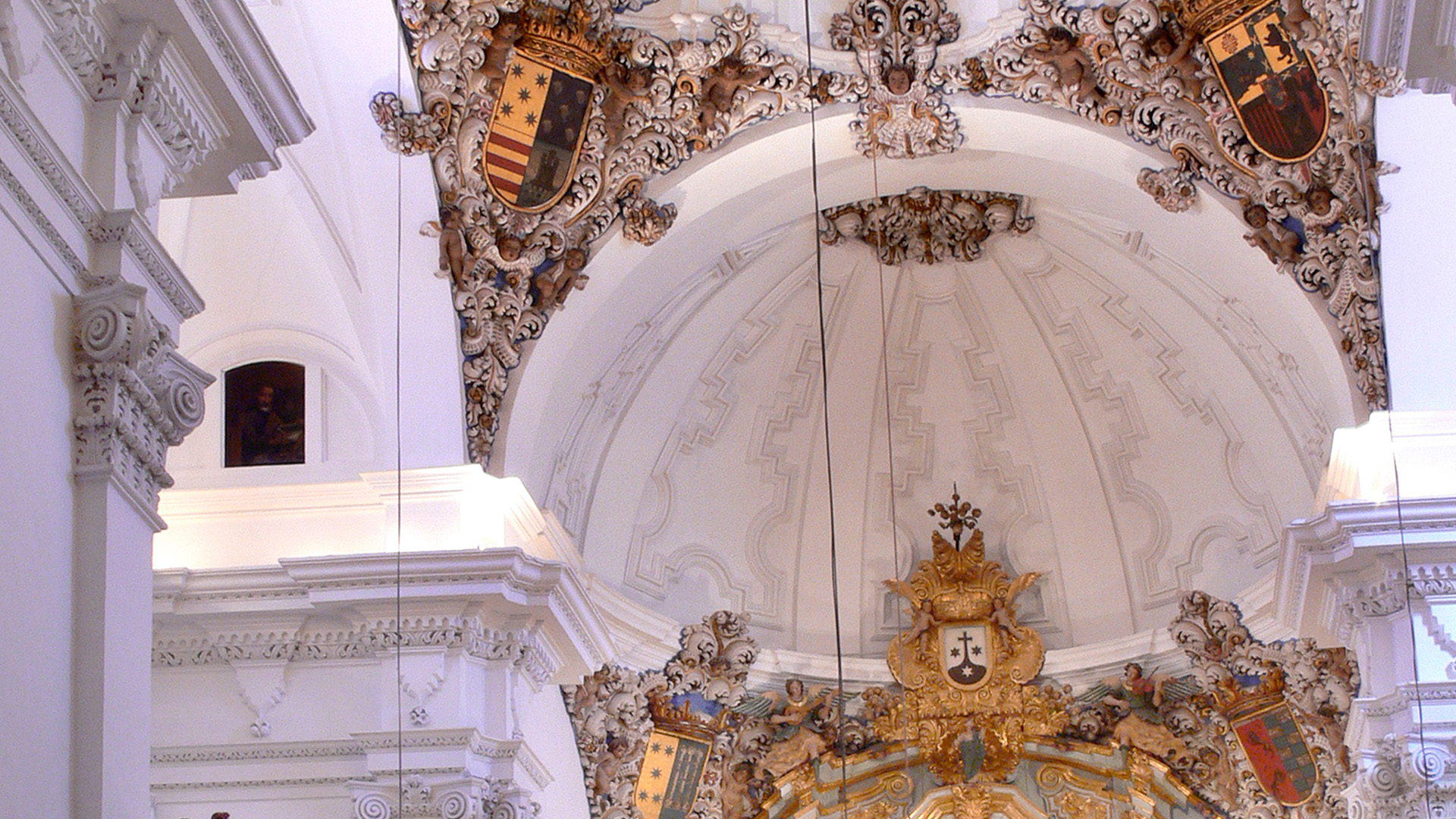Discover the Convent of San José.
The scheme of the cover recalls the Castilian type, a rectangular composition, crowned with a triangular pediment, in whose main cloth the cover itself is developed, structured in two bodies. This is made of magnificently carved and carved brick, with numerous applications of baked clay in which a confusing Greco-Roman decorative program of mermaids, newts, pegasus and masks is represented. The plan of the church is of Latin cross, of a single nave and with the arms of the transept shallow. The main altarpiece, of three streets and finished in half a point, profusely uses the stipe as an articulating element, repeating the program of Carmelite saints that we will see in the church of Carmen. This altarpiece presides over San José, work of the seventeenth century, which suffered a serious deterioration as a result of lightning, having to replace the head. It is the work of Andrés de Carvajal.

The other altarpieces that decorate the church must be from the same period. Very interesting are the sculptures of the collateral altarpieces of the transept, those of Santa Teresa of the eighteenth century, and that of San Juan de la Cruz of the twentieth century, both Doctors of the Church. In a Rococo altarpiece we find a beautiful image of the Virgen del Tránsito. In the sculptural section, the lamp angels of the presbytery also stand out, probably the work of Miguel Márquez.
The paintings that decorate this interior are of notable interest, highlighting a magnificent canvas by Pedro Atanasio Bocanegra: The Virgin and Child adored by San Miguel, San Gabriel, San Ildefonso and Santa Catalina; in front of this painting there is another of San José con el Niño and San Juanito, signed by the same author of the previous one. Other important canvases are the Architectural Perspectives. The Conventual Museum of Las Descalzas offers this splendid space as the first room in its museum tour.
Contact:
Address: Plaza de las Descalzas, Antequera, Málaga
Phone: 952 84 19 77
